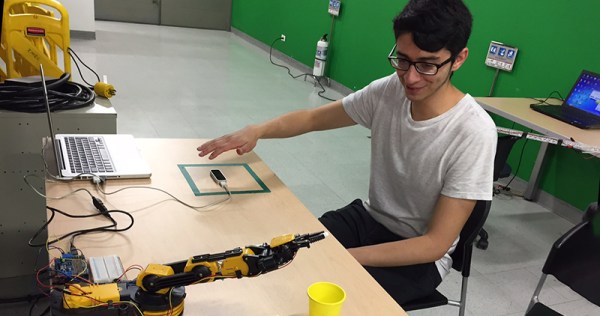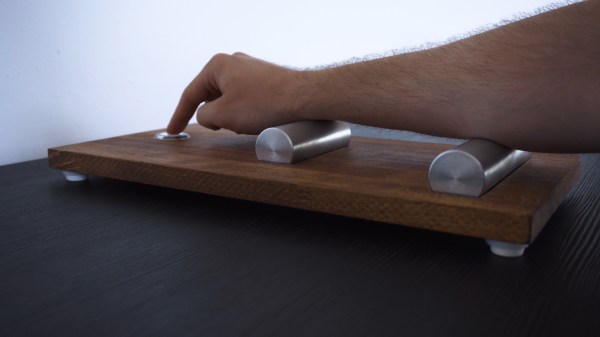Assistive technology is extremely fertile ground for hackers to make a difference, because of the unique requirements of each user and the high costs of commercial solutions. [Nick] has been working on Earswitch, an innovative assistive tech switch that can be actuated using voluntary movement of the middle ear muscle.
 Most people don’t know they can contract their middle ear muscle, technically called the tensor tympani, but will recognise it as a rumbling sound or muffling effect of your hearing when yawning or tightly closing eyes. Its function is actually to protect your hearing from loud sounds screaming or chewing. [Nick] ran a survey and found that 75% can consciously contract the tensor tympani and 17% of can do it in isolation from other movements. Using a cheap USB auroscope (an ear camera like the one [Jenny] reviewed in November), he was able to detect the movement using iSpy, an open source software package meant for video surveillance. The output from iSpy is used to control Grid3, a commercial assistive technology software package. [Nick] also envisions the technology being used as a control interface for consumer electronics via earphones.
Most people don’t know they can contract their middle ear muscle, technically called the tensor tympani, but will recognise it as a rumbling sound or muffling effect of your hearing when yawning or tightly closing eyes. Its function is actually to protect your hearing from loud sounds screaming or chewing. [Nick] ran a survey and found that 75% can consciously contract the tensor tympani and 17% of can do it in isolation from other movements. Using a cheap USB auroscope (an ear camera like the one [Jenny] reviewed in November), he was able to detect the movement using iSpy, an open source software package meant for video surveillance. The output from iSpy is used to control Grid3, a commercial assistive technology software package. [Nick] also envisions the technology being used as a control interface for consumer electronics via earphones.
With the proof of concept done, [Nick] is looking at ways to make the tech more practical to actually use, possibly with a CMOS camera module inside a standard noise canceling headphones. Simpler optical sensors like reflectance or time-of-flight are also options being investigated. If you have suggestions for or possible use case, drop by on the project page.
Assistive tech always makes for interesting hacks. We recently saw a robotic arm that helps people feed themselves, and the 2017 Hackaday Prize has an entire stage that was focused on assistive technology.









 A Human-Computer Interface (or HCI) is what we use to control computers and what they use to
A Human-Computer Interface (or HCI) is what we use to control computers and what they use to 









